|
By Nathan Whitman 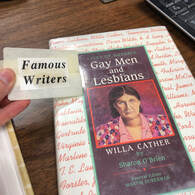 The censorship my student and I discovered The censorship my student and I discovered With lists in hand, the search underway, we scoured the library for the book for her research project. Now, our school library wasn’t large – barely a shoebox of a room, and yet the text eluded us. Right before the bell was to ring, my student approached me. “Mr. Whitman, is this it?” she asked. I looked at the call number: it was, but the title was off. On the computer print off, the title read Famous Writers: Willa Cather. The cover looked to match, but the spine told a different story: Lives of Notable Gay Men and Lesbians: Willa Cather. It was then we realized what we held in our hands: censorship, erasure of LGBTQ+ identities in our school. I decided to liberate this book, take it back out of the closet – for lack of a better phrase. While my student looked for other items on her list, I peeled away the label that some staff member generations before had decided would make this text “school-appropriate.” My colleagues in larger, more diverse school districts may find this shocking, but parts of rural Kansas are still playing the catchup game on diversity and inclusion, a game that many community members would be happy to see our students lose. According to the most recent GLSEN “2019 State Snapshot: School Climate for LGBTQ Students in Kansas” survey, only 52% of LGBTQ students report having inclusive library resources. Worse yet, only 12% reported LGBTQ-inclusive curriculum. In contrast to the 2017 GLSEN Kansas State Snapshot, only 51% of students reported having inclusive library resources; 17% reported LGBTQ-inclusive curriculum. From this two-year difference certain conclusions are clear: representation is stagnant in a best-case scenario in our libraries, but that 5% decrease in classroom representation is undeniable proof that Kansas educators must do better. However, I would be remiss to say that this lack of representation is – as a whole – purposefully malign. The publishing industry only recently started to actively pursue works by LGBTQ+ authors or books that have LGBTQ+ characters and themes; furthermore, tracking and monitoring LGBTQ+ representation in the publishing industry is still in its infancy. The Cooperative Children’s Book Center’s (CCBC) “2017 Statistics on LGBTQ+ Literature for Children and Teens” found that of 3,700 books, 136 (3.68%) had significant LGBTQ+ content, which “includes books with LGBTQ+ primary or secondary characters, LGBTQ+ families, nonfiction about LGBTQ+ people or topics, and . . . ‘LGBTQ+ metaphor’ books.” Some educators may not know where to begin looking for LGBTQ+ texts or what the best texts to include are. Luckily, resources for them are growing by the day, such as the HRC’s Welcoming Schools initiative, Scholastic’s “10 LGBT+ Books for Every Child’s Bookshelf”, Learning for Justice’s “LGBTQ Library”, the lists at LGBTQ Reads, and the Rainbow Library. Nevertheless, I know that fighting for a diverse curriculum, let alone diverse library, is also a challenge that educators and librarians face. This comes from personal experience. When I first joined my former district, the librarian and I attempted to order a slew of award-winning books that also reflected diverse communities, including those of sexual orientation and gender identity: purchase order denied. Yes, something is rotten in the state of education and literacy, and the pattern is undeniable when looking at the American Library Association’s “Top 10 Most Challenged Books of 2019”. Can you spot the pattern? 1. George by Alex Gino 2. Beyond Magenta: Transgender Teens Speak Out by Susan Kuklin 3. A Day in the Life of Marlon Bundo by Jill Twiss, illustrated by EG Keller 4. Sex is a Funny Word by Cory Silverberg, illustrated by Fiona Smyth 5. Prince & Knight by Daniel Haack, illustrated by Stevie Lewis 6. I Am Jazz by Jessica Herthel and Jazz Jennings, illustrated by Shelagh McNicholas 7. The Handmaid’s Tale by Margaret Atwood 8. Drama written and illustrated by Raina Telgemeier 9. Harry Potter series by J.K. Rowling 10. And Tango Makes Three by Peter Parnell and Justin Richardson, illustrated by Henry Cole Did you figure it out? If not, here’s an overly simplified breakdown. Americans are terrified of their children becoming one of four things: gay, feminists, witches; or gay, feminist witches. Jokes aside, these challenges come from our communities. The most frequent reasons for seeking to ban seven of these ten books? LGBTQIA+ content. Moreover, 43% were banned specifically because of content on trans or gender identities, and 43% were banned due to conflicts with religious or “traditional” family values. Some bans even continue to perpetuate the harmful myth that LGBTQIA+ identities are an illness, sin, or something into which children might be indoctrinated: 43%. I’ve seen this myth – one debunked by the Southern Poverty Law Center – perpetuated in many schools and communities. Furthermore, the American Academy of Pediatrics all agree with research: people do not choose to be LGBTQ+, and it is caused by genetic and environmental factors. This includes gender identity. When students have asked me or the counselor for LGBTQ+ books, we’ve helped them find copies of age-appropriate texts, but sometimes we receive the books back from home with a note that the child shouldn’t read it because it may turn them gay, or that the family doesn’t approve of the content on religious reasons. I’ve even had parents express concern that I was teaching Walt Whitman and Emily Dickinson through a queer analytical perspective. Have you read much of Whitman’s poetry or Dickinson’s letters to Susan Gilbert? If you’ve ever read anything beyond Whitman’s American nationalism and Dickinson’s death or religious poems, they’re pretty gay. Just as reading from the perspective a person of color’s experience won’t turn a child into a different race, reading the perspectives of a queer person or considering classical class texts through a queer lens won’t turn a child gay. But, I can tell you one thing it will do: it will help them build empathy. It will help them understand others – people not like them. And, if I’m lucky, some may see themselves reflected. To be frank, there is nothing wrong with coming from a religious family or one that has “traditional” family values. Those are my roots. What is wrong is when religious communities and families want to create a parochial school in a public institution by censoring texts and curriculum. Public schools serve just that: the public. Everyone. Even LGBTQ+ people. Plenty of texts in the ELA canon feature nuclear “traditional” families or heterosexual relationships (Romeo & Juliet, To Kill a Mockingbird, The Great Gatsby, The Hunger Games, The Odyssey, Pride and Prejudice, Sense & Sensibility, A Tale of Two Cities, Their Eyes Were Watching God – all say, “Hello!”); many feature or reference Judeo-Christian ideas, morals, and philosophies (A Christmas Carol, The Crucible, The Scarlet Letter, Dickinson’s religious poems, and nearly any early-American text in a junior English textbook also say, “Wassup?”). What we are not asking for is their erasure: we are asking for our equal representation. If that disturbs you, a school system that represents everyone, here’s a list of private Kansas schools. As a friendly reminder, private education does not always have to provide services to people with disabilities, LGBTQ+ students, or students of color. In short: no federal funding? Fewer protections. 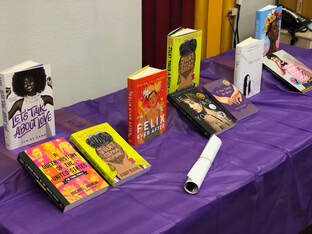 The texts included in my Rainbow Library The texts included in my Rainbow Library While protections are growing for our LGBTQ+ students, there’s still much work to be done, and it starts with the teachers. Often, we make purchases at our own expense, but sometimes blessings come our way, like that aforementioned Rainbow Library. When a representative from GLSEN Kansas posted that this nonprofit collaborative was happening, that I could obtain free LGBTQ+ books for my school’s library, I jumped at the chance. Purchase orders be damned! Willa Cather was going to have company. Upon receiving the texts, I created a display in my classroom, performed a book talk, and I asked each class of students the following questions on an anonymous survey. In total, about 66% of high school students completed the survey, and these were my findings. Question 1: Do any of these books interest you? Why and why not?
Question 2: Should students have access to books like these in a school library or classroom library? Why or why not? Despite religious convictions, 100% of students surveyed thought that the books belonged in a school or classroom library. A few of their most poignant statements are below. Only spelling, punctuation, and capitalization have been corrected for readability.
If only their parents and communities knew their thoughts and the value of these texts to our students. Unfortunately, many students feel they can’t have these conversations with their parents. They fear what might happen: disapproval, conversion therapy, disownment. As we tell our LGBTQ+ students, “It gets better,” we must also remind ourselves that it is getting better, and we teachers can make it better. If I’m certain of one thing, it is this: there is hope for the future, and it’s sitting in my library and in the desks of my students.  About the Author Nathan Whitman is the current Kansas Association of Teachers of English President. He teaches English at Derby High School USD 260 and is also an adjunct professor at Hutchinson Community College and WSU Tech. Twitter: @writerwhitman Instagram: @writerwhitman By Dr. Katie Cramer ***The following post was originally posted on Dr. Cramer's personal blog, which can be found here. In her groundbreaking book Cultivating genius: An equity framework for culturally and historically responsive literacy, Dr. Gholdy Muhammad convincingly argues that Black and Brown excellence has been erased from our curriculums and that contemporary education prioritizes the teaching of basic skills to the detriment of our students, particularly our students of color. To address these significant issues, Muhammad (2020) developed the Historically Responsive Literacy (HRL) Framework based on her research on Black Literary Societies of the early 1800s in which “literacy was not just for self-enjoyment or fulfillment, it was tied to action and efforts to shape the sociopolitical landscape of a country that was founded on oppression” (p. 22). The four pursuits of the HRL Framework The HRL Framework features four interwoven pursuits that also align with those of the Black Literary Societies of the early 19th century:
In her book, Muhammad argues that the HRL Framework is useful in all content areas at all levels. She explores each of the four pursuits in detail and convincingly argues the value of each one. For example, in describing identity development, Muhammad (2020) reminds us that identity was stripped from enslaved Africans and so it is vital that people of color know themselves in order to tell their own stories (p. 64). We must encourage our students to speak for themselves, and we must listen. We must also interrogate and resist our own deficit thinking (e.g., labeling students first/only as “at risk,” “defiant, “unmotivated, “tier 3”), and instead take an appreciative stance toward their existing literacies (Bomer, 2011, p. 21). We must check our (colleagues’) bias when speaking about students who have been and continue to be marginalized in schools. We must listen to Muhammad’s words: “I have never met an unmotivated child; I have, however, ‘met’ unmotivating curriculum and instruction” (2020, p. 65). Indeed, our students’ identity stories must begin with their excellence (Muhammad, 2020, p. 67). Erasure of Black and Brown Excellence Dr. Muhammad convincingly argues that knowledge of Black Literary Societies and Black and Brown excellence has been erased from our curriculums throughout PreK-16, including in teacher education programs. Like Larry Ferlazzo (2020), I am embarrassed to admit that I had never heard of Black Literary Societies before reading her book. She urges teacher educators (those who prepare future teachers) toward the following pursuits:
Exploring the HRL Framework As teachers (at all levels), we must interrogate our own practice using the HRL framework, asking ourselves for each pursuit: “Where is the evidence in my practice?” and “What are my goals for improvement?” To engage in this work, I urge you to review questions for reflection from Dr. Muhammad that accompany each pursuit and consider how you might revise (or design new) lessons/units to fulfill these pursuits—and engage in your own intellectual development by exploring Dr. Muhammad’s work further (see links the list of references below): Identity
Skills
Intellect
Criticality
Friends, we must interrogate our curriculums—the ones we design AND the ones provided by our school districts. As Dr. Muhammad (2021) reminds us, we “have enough genius to do this work.” So let us begin. References Bomer, R. (2011). Building adolescent literacy in today’s English classrooms. Heinemann. Ferlazzo, L. (2020 Jan. 28). Author interview with Dr. Gholdy Muhammad: “Cultivating genius.” Edweek. https://www.edweek.org Muhammad, G. (2020). Cultivating genius: An equity framework for culturally and historically responsive literacy. Scholastic. Muhammad, G. (2021 Mar. 17). Cultivating genius and joy: An equity model for culturally and historically responsive literacy [Webinar]. WRITE Center. https://www.writecenter.org/webinars.html Further reading Learn more about Dr. Gholdy Muhammad by viewing her faculty profile at Georgia State University. For more information on Black Literary Societies, read Cultivating Genius and/or Forgotten readers: Recovering the lost history of African American literary societies (2002) by Elizabeth McHenry, the first chapter of which is available HERE. 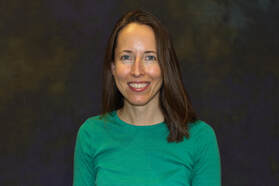 About the Author Katherine Mason Cramer is a former middle school English teacher and a professor of English Education at Wichita State University. She has been a KATE member since 2010 and an NCTE member since 2000. She serves on the KATE Executive Board, and has served as Editor of Kansas English since 2017. She can be reached at Katie.Cramer@wichita.edu. by Michaela Liebst February 1st marks the first day of Black History Month, and with all of the events that have transpired over the past year, the celebration of black culture, influence, and pride feels more important than in years past. As educators, we are given a unique chance to highlight Black voices and bring them to the forefront of our curricular focus, exposing students to new concepts, ideas, and styles that they may have never experienced before. The KATE blog team feels passionately about this endeavor, and wants to aid you in bringing minority voices to the forefront. We are excited to provide a list of novels created by ELA teachers for both elementary and secondary grade levels that represent not only black characters, but other minority groups as well. We believe representation in literature is the key to equity and that creating a culture of understanding and inclusion within our classrooms is essential for helping to ease some of the dissonance that our communities, states, and nation are currently facing. We hope that this list inspires you to consider changing up the books you include in your curriculum, or to spice up your classroom library so that students have more access to a diverse range of books. I also encourage you to check out this blog post by Dr. Katie Cramer regarding the NCTE’s position statements “...to support curricular inclusion…” of all types of diversity. We are aware that combining the beliefs of your district with our nation’s current political climate could possibly deter you from wanting to provide access to these texts. However, we challenge you to start small and use the position statements as a way to advocate for the inclusion of these texts in your school buildings. Overall, we are excited for the opportunity to share this list with you and hope it inspires you to take advantage of this month to shake things up and prioritize the inclusion of all voices in your curriculum.  Book Suggestions for Secondary ELA Teachers BLACK HISTORY MONTH A Song of Wraiths and Ruins by Roseanne A. Brown: “The first in a fantasy duology inspired by West African folklore in which a grieving crown princess and a desperate refugee find themselves on a collision course to murder each other despite their growing attraction.” - suggested by Madison Jewell, Middle School ELA Teacher  Children of Blood and Bone by Tomi Adeyemi: “The first book in a series about a girl trying to restore magic. The monarchy tries to stop her.” - suggested by Madison Jewell. Ghost Boys by Jewell Parker Rhodes: “A Black boy who was killed by a cop comes back as a ghost along with other black boys unjustly killed to make a difference.” - suggested by Krista May-Shackleford, Elementary Media Specialist  Slay by Brittney Morris: “Slay is a great read—A Black female protagonist has designed a game only open to Black players and keeps her role a secret. Her game has real world consequences and she suddenly finds herself over her head. I’m not a gamer but enjoyed it on so many levels.” - suggested by Lizanne Minerva, High School ELA teacher OTHER MINORITY GROUPS Middle-Eastern Culture -The Wrath and the Dawn by Renée Ahdieh: “Sharazad wants to get revenge on the boy-king who murders his new bride the night they marry. She chooses to marry him but comes to find he may not be like what he seems.” - suggested by Madison Jewell Latinx Culture - Into the Beautiful North by Luis Alberto Urrea: “Into the Beautiful North depicts fun, memorable characters who embark upon the dangerous journey to cross the border into America. This author has a unique way of combining humor, realistic teenage angst, and the serious issue of border crossing that keeps you turning pages and cheering for the heroine and seriously hoping for a sequel!” - , suggested by Deborah McNemee, High School ELA teacher LGBTQ+ - Cemetery Boys by Aiden Thomas: “A trans boy determined to prove his gender to his traditional Latinx family summons a ghost who refuses to leave” - suggested by Madison Jewell 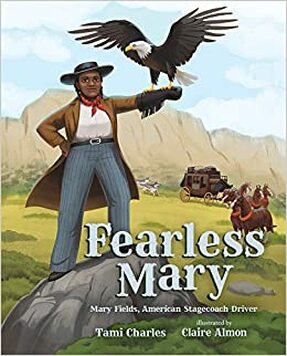 Book Suggestions for Elementary Teachers BLACK HISTORY MONTH Fearless Mary by Tami Charles: “A real-life story that takes you back to the western front and hard dirt trails! Mary was the first woman stagecoach driver – the first African American woman stagecoach driver, in fact! This book shares some of her trailblazing experiences during her journeys carrying much-needed supplies and much-welcomed letters to people who had moved out west! Comic-book style illustrations make for a fun accompaniment to her story, including how her actions have influenced present-day mail delivery!” -suggested by Hannah Kraxberger, an elementary student teacher 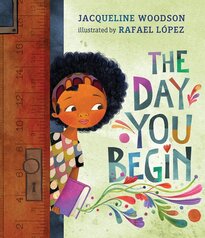 The Day You Begin by Jacqueline Woodson: “The Day You Begin is about a young girl experiencing kindergarten for the first time. She is excited and nervous at the same time! Everyone seems so different. When the students share what they did over the summer, it’s hard for Angelina. She hears of all the wonderful stories of adventures her classmates went on while she stayed home and watched her sibling. Angelina finds her voice to share that she stayed home and, even though she didn’t experience any amazing stories, she MADE stories and that’s okay...Everyone has similarities and differences, and that’s what makes us beautiful!” - , suggested by Hannah Kraxberger CHILDREN W/ DISABILITIES Moses Goes to a Concert by Isaac Millman: “This book encourages the use of sign language throughout and includes accurate, colorful illustrations of how to sign the text. The book also exemplifies more subtle attributes of d/Deaf culture, such as some of the students waving to show their applause. The most admirable trait of Moses Goes to a Concert is the depiction of Moses and his friends as happy children who have typical lifestyles. The book does not focus on their disability as a problem to be fixed, and Mr. Samuels teaches them ways to thrive and enjoy activities in unique ways.” - suggested by Hannah Schoonover, an elementary student teacher Why Does Izzy Cover Her Ears? Dealing with Sensory Overload by Jennifer Veenendall: “This book details how confusing school can feel for a child who has a sensory processing disorder. This book could also help a teacher or parents realize that frequent misbehaviors often have an underlying cause. Classmates of a child like Izzy could better understand the reactions their classmate has and the interventions their classmate uses after reading this book. This book could also help a child with a sensory processing disorder explain how or what they are feeling in certain situations and give them a character with whom they can relate.” - suggested by Hannah Schoonover The Seeing Stick by Jane Yolen: “The Seeing Stick begins with Hwei Min feeling sad that she cannot see and shows her father trying to help fix her disability. However, as the book progresses it shows Hwei Min’s emotional transformation as she becomes comfortable “seeing” with her fingertips. The Seeing Stick gives the message that Hwei Min did not need to be “fixed.” However, she just needed the correct help and tools to allow her to embrace her disability.” - suggested by Hannah Schoonover We’ll Paint the Octopus Red by Stephanie Stuve-Bodeen: “Stephanie Stuve-Bodeen, author of We’ll Paint the Octopus Red, strove to write this book from a child’s point of view on what having a younger sibling with Down syndrome could be like.” -suggested by Hannah Schoonover GENDER A is for Awesome! by Eva Chen: “I really liked this board book about awesome women. I really enjoyed the quotes by Amelia Earhart, Katherine Graham, Queen Elizabeth I, and…you! Each page features an incredible woman and has a quote by her. I really liked that quotes are included, and they are so beautiful! The illustrations will easily capture your reading buddy’s attention and keep yours. It’s primarily for the 0-4 age range, but I think it would be engaging for kindergarten and first grade students, too!” - suggested by Hannah Kraxberger 50 Women in Science by Rachel Ignotofsky: “Fifty women, born from 350 CE through 1977, have their stories and inventions and experiments recorded in this book. You’ve got your (now) well-known Katherine Johnson, Marie Curie, and…SURPRISE! Did you know that Hedy Lamarr, star of Hollywood’s Golden Age, was also an inventor? She’s most definitely more than just a pretty face. Each biography has an illustration of the woman, a quote from her, a small summary of what she’s accomplished, and a full page detailing how and when she made her mark on science. With all that information, it’s definitely not a sit-down-and-read-all-at-once kind of book, but highly worth your time. This book will be in my classroom for sure.” - suggested by Hanna Kraxberger CULTURAL The Proudest Blue by Ibtihaj Muhammad: “It’s the first day of school and Faizah’s older sister Asiya gets to wear the most beautiful deep blue hijab she has ever seen. It’s a big deal because it means Asiya is all grown up now! But Faizah doesn’t understand why some kids at school tease her sister for the hijab. Don’t they know it is an honor? Don’t they see the beauty in it? Written by an Olympic medalist, this book explains the meaning of the hijab to the Muslim faith and to the women who wear it. The colors and illustrations used are eye-catching for the reader (and listener!) to engage with. Moreover, it tells a wonderful story of being brave, resilient, and understanding of differences. “ - suggested by Hannah Kraxberger Same Same but Different by Jenny Sue Kostecki-Shaw: “A tale of two pen pals, this is a book of exploring differences! Elliot tells about his American house. Kailash writes a letter back about how his house in India is different, but also the same! Kailash writes about his pet. Elliot writes back to share about his pet and how it’s different. As the letters go on, the boys find that same and different are things that they share – in a lot of aspects!” - suggested by Hannah Kraxberger We Are Grateful by Traci Sorrell - “This book walks through memories of the Cherokee people using the native word for “grateful” to apply to different situations as a way of remembering the past and celebrating the future. Side note – This was perhaps the first book I’ve had the pleasure of reading that involved Native American tribes in a non-Pilgrim perspective or setting and it was so good.” - suggested by Hannah Kraxberger While we know that this list doesn’t even begin to scrape the surface of all of the incredible books available to teachers, we are excited about this list because it contains books that have been vetted by actual teachers in actual classrooms.
If there’s a book you feel passionately about that should have made the list, comment it below so that we can continue to celebrate and include the voices of both Black culture as well as other minority groups. Happy February and Happy Black History Month!  This year, KATE is pleased to announce that on November 7th at 2 p.m., Nic Stone, author of the New York Times bestseller, Dear Martin, will deliver a virtual keynote address followed by a Q&A session, available to all KATE members as our gift to you for your continued support and dedication to teaching English in the state of Kansas. Nic Stone is an Atlanta native and a Spelman College graduate. After working extensively in teen mentoring and living in Israel for several years, she returned to the United States to write full-time. Nic's debut novel for young adults, Dear Martin, was a New York Times bestseller and a William C. Morris Award finalist. She is also the author of the teen titles Odd One Out, a novel about discovering oneself and who it is okay to love, which was an NPR Best Book of the Year and a Rainbow Book List Top Ten selection, and Jackpot, a love-ish story that takes a searing look at economic inequality. Clean Getaway, Nic's first middle-grade novel, deals with coming to grips with the pain of the past and facing the humanity of our heroes. Nic lives in Atlanta with her adorable little family. In lieu of this exciting keynote speech, KATE wanted to provide its members with a little preview of Nic's personality and flair. Cue a hilarious and telling game of "Would You Rather...?" between the author and KATE's VP, Erica Shook. Please enjoy the following tidbits that Nic was so gracious to share with us, and we hope you'll join us on Saturday! Shook: Ok, Nic. Would you rather:
Potter or Snape Stone: SNAPE ALL DAY EVERY DAY. Shook: Know it all OR Have it all? Stone: Definitely have it all. Knowledge can be burdensome. Shook: Talk like Yoda OR Breathe like Darth Vader? Stone: Like Yoda, speak I would. Shook: Be a superhero OR Be a famous singer? Stone: I am CLEARLY both. Tuh. Shook: Go to work OR Stay home and bang on drums all day? Stone: Drums. Shook: Be transported to a place and time of your choosing in the past OR Be transported to a random place and time in the future? Stone: Def place and time of my choosing in the past. Shook: Steal honey from a bear OR Steal honey from a beehive? Stone: I'll take the bear. Shook: Be 50% good at everything OR Be 100% good at one thing? Stone: 100% good at loving people! Shook: Jump into a pool of lava OR Jump into a pool of freezing water? Stone: I mean I die either way, so... Shook: Be stuck inside on a good day OR Be stuck outside on a bad day? Stone: Inside. Sleep is always an option. Shook: Be color blind OR Have no taste buds? Stone: Yeeks... color blind. Shook: Always say everything on your mind OR Never speak again? Stone: Always say everything. (These are brutal.) Shook: Have the power to read minds OR Have the power to read hearts? Stone: I wanna read hearts. Shook: Fight 100 duck-sized horses OR Fight 1 horse-sized duck? Stone: 1 over 100. Even though a horse sized duck sounds terrifying. Shook: Live in a space station OR Live in a deep-sea submarine? Stone: Space station! Shook: Pop OR Soda? Stone: Eww neither. Coke. Sprite. Fanta. Pepsi. CALL IT BY ITS NAME. Shook: Chili and cinnamon rolls OR Chili and cornbread? Stone: Cinnamon rolls. #dessert Shook: Lose the ability to read OR Lose the ability to write? Stone: How dare you! Not choosing. So there. Shook: Lipstick OR Earrings? Stone: This is getting worse and worse. (Earrings.) Shook: Lipstick OR Shoes? Stone: And here I thought we were friends. Smh. (Shoes.) Get registered if you haven’t already. You are not going to want to miss KATE in conversation with Nic Stone. See you all Saturday! Erica Shook, KATE Vice-President By Cheryl Poage As an educator, I have always encouraged my students to go out of their comfort zone and challenge themselves—to reach out and stretch just enough to feel a little discomfort. Over the past 17 years, I became comfortable with my content, my school family and my students—quite honestly, I was perfectly happy in this comfort zone. So when my husband proposed moving back to his home state of Kansas, I heard myself telling my students to “challenge themselves and stretch a little”—and decided it was now my time to stretch! As I began my job search, one position that stood out to me was a Blended Learning position teaching high school English at Andover eCademy. I had never taught high school English, I had never taught online, and seeing the faces of my students every day was extremely important to me! So why choose this? Because it made me stretch…it was a limb I had never reached out to before. What type of educator would I be if I challenged my students to explore the unknown, but wasn’t willing to do that myself? I secured a position with eCademy and anxiously awaited my August 2019 start date. I knew there would be a learning curve on my end, but the challenge intrigued me; this opportunity would allow me to look at education through a new lens. I had so many questions about the Blended Learning Model and it seemed my list grow longer each day: How will I build solid relationships with students? How will I develop a learning community that will allow students to engage in discussion and share learning experiences? How will I give proper feedback when each student is working at his/her own pace? As the year progressed, I was able to eliminate many of the questions I started the year with; however, each brainstorming session with colleagues posed a new challenge—adding to my evolving list. eCademy is fortunate to have an administrator who encourages his staff to be innovative and allots time for collaborative brainstorming sessions. This practice inspired me to refine my craft and become more flexible and open to a new way of teaching and reaching students. Relationship Building The first day of school is always exciting! It is when I am able to put a face to each name on my roster and begin to build relationships. However, this isn’t necessarily the case when teaching virtually. Not every student begins class on the same day and many do not feel comfortable showing their face, so it is important to become creative with lessons and build trust. One modicication I made in order to “see” students in my reading class was to ask students to submit a “selfie” that incorporated a portion of their face with the cover of a novel they were reading. An adjustment I made in a writing lesson was to have students use audio to give a verbal reflection—allowing me to at least hear my students, if I could not see them. These were very small changes, but it allowed me a quick glimpse—it was a starting place. As the year continued, relationships grew through daily feedback, emails and phone calls; however, the most significant difference I saw was when CoVid-19 changed our world! I used the time for reflection and self-growth and revised my teaching even further. I took trainings that were offered, solicited the help of colleagues a bit more and found ways to personalize my lessons to allow student’s choice, time to reflect, and share more of themselves with me through “Motivational Monday” lessons. I scheduled individual and group Zoom sessions for students to work on assignments with me or with peers. I held daily Zoom check-ins with students who were struggling with motivation during the Stay At Home order. I began to see more faces and the trust began to build! CoVid-19 may have taken some opportunities away from us, but it allowed me the time to grow as an educator and it brought many of my students out from behind the computer screen and into a Zoom session! Although the road to building bonds looked different than it did in my previous years of teaching, I do believe the gradual growth was critical to form the foundation needed for solid relationships. Student Success At eCademy homeroom is taken to a new level. Each teacher has his/her own group of approximately 20 students to support. Teachers contact their students on a weekly basis to discuss grades, celebrate successes, and discuss a plan of action for those who may be struggling. In addition to working with our homeroom students one on one, we also have bi-weekly meetings with administration and guidance counselors built into our schedules. During this time we discuss each student’s progress and prepare a personalized plan of action for any student who may be struggling. Our roundtable discussions allow us develop a clear understanding of the overall student. During these meetings, It was inspiring to see how well the teachers, administrators, and counselors knew ALL students—both academically and emotionally. So often, in a Brick and Mortar it is difficult to allot time to engage in these valuable whole group discussions due to scheduling, teaching, non-teaching duties, etc. As a result of these meetings, we are able to focus on students who have consistent missing assignments and a lower than average GPA and create an engagement plan to help them succeed. Students, parents, and the homeroom teacher work together to develop this plan for success. I saw the impact of these meetings firsthand as I worked with several students, via Zoom, during second semester. Not only did these students go from failing grades to passing all subjects, but they also developed a more positive mindset and sense of confidence as they watched their GPA and comprehension of each subject improve. Community What sets eCademy apart from many other online schools is that we follow a Blended Learning model. This is what truly interested me about eCademy and what, I believe, brings in such interest from families across the state. Blended Learning allows students the opportunity to be a part of a school community, while learning at his/her own pace. Andover eCademy offers students numerous opportunities to be a part of a learning community at all grade levels. Students participate in Live Lessons with their teachers and classmates, attend field trips, and participate in clubs or in-house days offered at our Andover campus. In-house days may include group activities, team building, study sessions, guest speakers, or collaborative work. This time allows for students to build community and gain a sense of belonging. High school students have their own special spot nestled inside the eCademy building called the eCafe. The eCafe is situated similar to a coffee shop where students are able to study, collaborate, socialize, and develop friendships. It is monitored by a different high school teacher each hour, allowing students to work personally with the teacher on call. High school students also have the opportunity to plan socials, participate in Science Labs, attend field trips, and a select group also serve as mentors to our middle school students. In an effort to give out of town students the opportunity to build community, we also offer a Mobile eCafe. Once a week a teacher travels to a different library in the surrounding areas and students are invite to come in for a study session. This allows us to meet students who might not be able to travel to Andover, but would like to build relationships with their teachers and peers. Grading/Feedback Giving student feedback is a big portion of each day at eCademy. All lessons are loaded at the beginning of the semester and the courses are self-paced, so we receive various assignments from numerous students in several different classes at any given time. Although the amount of assignments coming in can sometimes seem overwhelming, there are a variety of assignments being turned in which keeps the grading fresh and interesting. Detailed feedback is critical when teaching in an online environment. Since we do not hold daily face to face lessons, feedback is a dedicated time to give each student the guidance needed to master a concept and communicate clear guidelines for students to reference when revising assignments. We offer feedback in several formats: verbal, written and face to face. I have found that since students in a Blended Learning environment are self-paced, they do not experience time constraints that are sometimes found in the classroom. This results in resubmissions and revisions that demonstrate improved execution, comprehension and overall grades. As year two begins, I feel reignited as an educator. The past year allowed me to experience one of the greatest learning adventures of my career. I learned it is okay to start small and grow gradually. I learned that even if a student isn’t right by your side, remarkable relationships can still develop. Most importantly, I learned that education isn’t about being comfortable…it is about change, challenge, and having the confidence to climb out of our comfort zone and STRETCH! 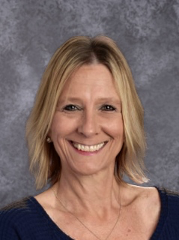 About the Author Cheryl is beginning her 19th year of teaching. In addition to English, Cheryl has taught AVID and served as an AVID Coordinator for eight years in Florida. She is currently a College and Career Elective teacher at Andover eCademy. Her passion is building relationships with her students and changing “I can’t” mindsets into “I can.” By Dr. Elizabeth Minerva 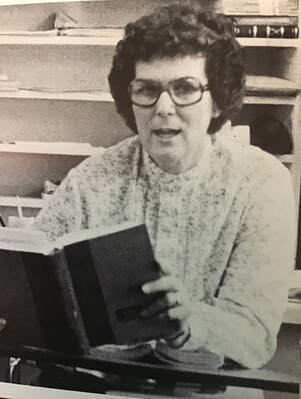 Sara Lamar, my favorite high school teacher. Sara Lamar, my favorite high school teacher. My favorite English teacher kept a loaded water gun handy in case a student drifted off during her AP English class. She once removed a spoke-like film reel from its case, tiptoed across the room, and dropped the empty metal canister on the hard floor beside a sleeping student’s desk. We were all delighted, save the startled sleeper. She could be terrifying when she asked a question about one of our assigned books, such as Absalom, Absalom (Faulkner was her favorite). Her bright blue eyes would rove from face to face until she snagged someone. She expected a lot and would push for more if she saw a student verging on a significant realization. In no other class did I think or write as intently as I did during her in-class essays, and this was before I discovered caffeine. Her timed tests were a pure adrenal joy. Sara Lamar was my favorite high school teacher. She knew so much about the literature we read that she made each book seem essential to understanding humanity: James Joyce’s Portrait of the Artist as a Young Man, Alan Paton’s Cry, the Beloved Country, Joseph Conrad’s Heart of Darkness/Secret Sharer, Mark Twain’s The Mysterious Stranger, William Faulkner’s The Sound and the Fury. Each new book was a revelation. She appreciated students’ ingenious ideas in class, guided us when we went off track, and encouraged our individual interpretations. I didn’t talk in class unless called upon. When she did call on me, it was because I was caught in her tractor beam gaze. One morning, Ms. Lamar gave the class a brief task and asked me to talk with her in the hallway. She had noticed that I’d seemed upset all week and wanted to know what was wrong. Voice shaking, I told her that my two-year crush had asked one of my best friends to the prom, which I learned when I called to ask if he wanted to go with me. This travesty led -- a few days later-- to the Latin teacher ordering me and the friend into the hall to deal with whatever was causing our furious note-passing. In the cell phone age, we would have spent the class period jamming our thumbs into our screens; then, our friends passed the folded up sheets of notebook paper hand to hand, all of them in on the conflict. This is a story I tell high school students with some self-deprecating humor (so much angsty material!), but at the time that boy mattered more than anything. Although teachers usually liked me -- quiet, conscientious, a copious taker of notes -- Ms. Lamar was the one who let me know that she saw me. We talked for a few minutes in the hallway. I cried; she listened and offered sympathy. It won’t always be like this, she assured me. When class resumed, I felt better -- not about the boy, but about being heard. My high school years occurred in a very different time. If a student knocked at the door of the teachers’ lounge, a resentful adult would appear in a slice of doorway, puffs of cigarette smoke wafting into the hall. “What is it?” the teacher would say tersely. On the south side of the school, there was a sloping student parking area where you couldn’t see inside the cars through the interior fog (“Freak Hill,” it was called). Freebird… Black and white students played on teams and served in student government together, but interracial dating was rare. Gay students, what? My American History teacher, a middle-aged woman with a perfect, shoulder-length flip, picked fights with our textbook’s prejudicial treatment of the south. Did she actually use the term “war of northern aggression”? Seniors had to pass a one-semester Americanism v. Communism class to graduate (no Bolsheviks in our bathrooms, thank you). I sat near the same people all four years in college prep track classes because alphabetical order was the obvious choice. Robin Montgomery, who often sat in front of or behind me depending on the class, maintained a 25-inch Levi waist size all four years. Although most administrators and teachers at Tallahassee’s Leon High School were kind, intelligent, and devoted, trauma-informed teaching would not have taken root in that red clay soil. If the houses on dirt roads that branched off Henderson Road really did not have central air and heating or other utilities, well, that’s just the way it was. Some people are poor. When baccalaureate was canceled my senior year due to complaints about holding a religious ceremony on school property, a civil war of words erupted; the church/state divide might’ve been legal but it wasn’t tradition. The school’s service clubs -- Key, Anchor, etc -- operated like fraternities and sororities with legacy members; many students who went on to public office started off in those exclusive groups. Life isn’t fair, is it? Deal with it, and hold your head high. We were a pride of lions. My high school was about the size of the one where I now teach in Wichita. My students don’t sit alphabetically in rows of desks, nor do the students in most of the ELA classrooms nearby. While ELA teachers still teach dead white male writers, the offerings are far more diverse these days. In addition, teachers are trained to know what ACES are and how they impact student performance, to recognize suicide warnings, to practice trauma-informed responses to student behavior. Individual relationships with students are essential because, without these connections, we can miss a key aspect of a student’s motivation. If you teach the material but don’t reach the students, what was accomplished? We are in this together and we care about our school community. Pride, Respect, Excellence. We are a sleuth of Grizzlies. When Ms. Lamar called me into the hallway that day, I already knew that she cared about me as a student. We had talked about my college choices. I’d stayed after class, questioning her about comments on my papers. She had supported me when I dropped typing to take Southern Lit with her senior year (the typing teacher was apoplectic -- a girl should have secretarial skills! What if I had children and my husband died and I had to support my family? I would need that second semester of typing). After my freshman year of college, I went back to see Ms. Lamar and she was eager to hear how I liked college, how my English professor had interpreted Faulkner. She had been sure I would enjoy college more than high school, and she was right. What I can take from all this as a teacher is obvious. Any teacher reading this knows how much those moments of recognition mean when a teenager just needs someone to look beyond the curriculum and see their face. My appreciation of Ms. Lamar is a call to be compassionate when students are struggling with life circumstances. Many of my students have far more challenging personal issues than a prom date. Students face serious mental health concerns, either their own or within their families. They might work a ridiculous number of hours at a low-paying job, watch younger siblings, bounce between households without a sense of stability, witness or participate in dangerous, risky behaviors. Schoolwork can be a lost concern when basic needs such as shelter and safety take precedence. Too, a boy or a girl who broke your heart is still cause for distress, as is the disappointing grade, the lunch spent alone in the Commons, the new glasses that no one noticed, the crap day that just keeps going. A moment of kind concern isn’t reserved for traumatic instances. And now, throw in a pandemic. During the COVID-19 crisis, reaching out to students has lacked the face-to-face barometer, the reward of seeing a teen smile or relax when they realize you just want to know how they are. In a professional learning session, a colleague suggested using Remind for short check-ins with students of concern, and I’ve found that to be a simple way to say “hey, how are you? Heard you’re working a lot of hours these days” or in some way let them know they are on my mind. Even students who do not end up turning in work will respond to a short personal inquiry. This isn’t, after all, about the student’s grade. So, I don’t wield a water gun or teach Faulkner, but I do still rely on the example Ms. Sara Lamar set. I see you. You matter to me. Are you okay? 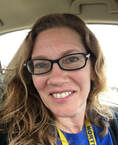 About the Author Lizanne Minerva is an ELA teacher at Northwest High School in Wichita, KS. A native of North Florida, she is a Florida State University graduate. By April Pameticky  I am a poet and a writer. It’s taken me years to take ownership of those words, in large part because I so often considered those activities somehow frivolous, self-indulgent, or superfluous. I saw them as ‘extra’ to my other roles: teacher, wife, mother. But I find there is nothing ‘extra’ about engaging the world as a poet first; that it’s the lens by which I measure and experience everything. It’s how I reconcile injustice and how I make sense of the senseless. Poetry is how I find my way home, both spiritually and metaphorically. And it’s often how I reflect on my every day, ordinary life. While I loosely studied poetry in college, my primary focus had always been fiction. It was only about ten years ago that I started exploring and studying poetry on my own. The irony, of course, is that as an English teacher, didn’t I always love poetry? The answer is No. More often than not, I believed that Poetry [capital P on purpose] was actually somehow lofty and above me. Poetry was for the ascetics and more ‘literary,’ not for me, who read trashy urban fantasy novels all summer long. But while pregnant with my oldest daughter, I found myself nesting in unexpected ways, drawn to more creative expression, and reading in ways I had never bothered to before. It helped that some friends put more contemporary poetry in my hands. Today, I take comfort and solace in poems: Yea, though I walk through the valley of the shadow of death, I will fear no evil: for thou art with me. 23 Psalm Do not go gentle into that good night, Old age should burn and rave at close of day; Rage, rage against the dying of the light. Do not go gentle into that good night –Dylan Thomas Poetry reminds us of perspective, like in the lines from Rae Armantrout’s “Thing:” We love our cat for her self regard is assiduous and bland, for she sits in the small patch of sun on our rug and licks her claws from all angles and it is far superior to "balanced reporting" though, of course, it is also the very same thing. Poets respond to the world with humanity, giving word to our fear and unrest. Rattle maintains the series Poets Respond, and poet Francesca Bell touches on our collective anxiety in her poem “Love in the Time of Covid-19.” She writes I held my hands steady in the water’s reassuring scald, trying and trying to save you. As teachers and educators, we have the opportunity to either spoil poetry for our students, or introduce them to something that will be their companion through life. My concern is that we often want to ‘unlock’ a poem, somehow divine its key, and then we expect our students to do the very same thing. We approach a poem as a Biology I student might a formaldehyde frog. I love how Elizabeth Alexander defines poetry with such concrete detail in “Ars Poetica #100: I Believe:” Poetry is what you find in the dirt in the corner, overhear on the bus. While poetry is both a craft and an artform, and there are certainly ‘rules’ and ‘conventions’ that apply (as anyone who has ever had to coach students through their own poetry revision process can attest), poems are also this wonderful opportunity to live with ambiguity. To grieve that we are no longer in our classrooms, but to celebrate that we are still teachers, that we can provide comfort and care to our students. So as we enter April and National Poetry Month, I want to encourage my fellow educators to give your students an opportunity to really engage with poems. The internet can be an amazing resource, even if an educator feels they don’t quite ‘get’ poetry. Take some direction from Dante di Stefano’s award-winning poem “Prompts (for High School Teachers Who Write Poetry” when he says Write the uncounted hours you spent fretting about the ones who cursed you out for keeping order. For those teaching remotely, the Dear Poet Project 2020 [Poetry.org] is an awesome opportunity to engage directly with poets. Students are encouraged to write letters after viewing the poets’ videos—two of my favorites are participating this year: Joy Harjo and Kwame Dawes. Poets read and discuss their works, and students can then respond. For educators wanting to embrace their inner poet, here are a couple of prompts to consider, but don’t feel you must limit yourself! We at KATE would love to read what you come up with. I want to encourage you to embrace your inner poet and to not strive so much for perfection or that ‘A’ poem. Instead, respond to where you are each day. There are some prompts provided below, as well as some further resources for inspiration. Prompts:
Resources:
Abstract Over the course of history, various groups have challenged, banned, and burned texts out of fear and the desire to control the thoughts and beliefs of a populace. Dictatorial regimes such as Hitler's Nazi-controlled Germany used "bonfires [to] 'cleanse' the German spirit of the 'un-German' influence of communist, pacifist, and, above all, Jewish thought" (Merveldt 524). Modern religious fundamentalism seeks to control a populace either through fear and indoctrination like the ultra-conservative, nearly-literal witch hunt of J.K. Rowling's Harry Potter series when religious leaders of various Protestant denominations feared that the hit young adult book series would teach impressionable minds actual witchcraft. One of the most famous and still frequently taught banned books is Mark Twain's The Adventures of Huckleberry Finn. In this paper the argument is made for the teaching of banned books by a case-analysis of Twain's text that considers the historical context, positive and negative aspects of the text, the harm of censorship, the value of free speech, and how frequently-challenged texts promote critical thinking for students. Author Biography
Nathan G. Whitman, Derby High School Nathan Whitman is an English teacher at Derby High School who has an MA in English, a BA in Secondary Education with an emphasis in English 6-12, and a BA in Creative Writing, as well as an endorsement in English to Speakers of Other Languages from Wichita State University. In addition to heading the school's GSA sponsor, he is also a founder of the Voices of Kansas journal published by the Kansas Association of Teachers of English, a 2014 Horizon Award Winner, and a Kansas Exemplary Educators Network Member. He can be reached at nwhitman@usd260.com. Implementing Vocabutoons in the English Language Arts Classroom: Drawing Their Way to Success10/3/2017 Abstract Although vocabulary acquisition remains a critical to literacy development, teachers infrequently devote classroom time to vocabulary exercises. In this article, the author demonstrates the use of "vocabutoons" as an instructional activity which draws upon students’ multiple literacies—in particular, visual literacy—in order to foster vocabulary development. Tooning is based upon the belief that "[p]roficient readers visualize what they read as they construct meaning from a text" (Onofrey & Leikam 682). Representative artwork created by English Education majors enrolled in a young adult literature course at a university in the Midwest will be featured to highlight the tooning process. Author Biography
William C. Sewell, Dakota State University Dr. William Sewell is assistant professor of English Education and Composition at Dakota State University in Madison, South Dakota. Dr. Sewell taught secondary English, forensics, debate, and theatre in Kansas schools for 12 years. His research interests include multimodal intertextuality, content area literacy, active learning strategies, young adult literature, and middle and secondary English education. He can be reached at william.sewell@dsu.edu. |
Message from the EditorWelcome! We're glad you are here! Archives
March 2024
Categories
All
|
 RSS Feed
RSS Feed